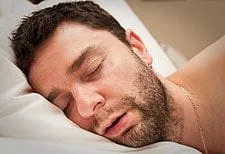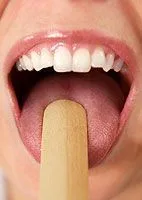Snoring Procedures
Obstructive sleep apnea is a common condition that involves breathing problems during sleep, as the throat muscles relax and block the airway. Patients with obstructive sleep apnea often experience loud snoring, daytime sleepiness, morning headaches, insomnia and waking up with a sore throat. This condition can affect anyone, but is most common in older adults. We usually order a sleep study in order to differentiate snorers who have a level of obstructive sleep apnea. Patients with sleep apnea require a trial with CPAP masks or other surgeries.
Treatments
The Pillar® Procedure (click for more info)

There are many solutions available that claim to cure snoring, but many prove to be ineffective or only temporary. The Pillar® Procedure is a simple, minimally invasive procedure that is clinically proven to effectively treat snoring.
Snoring is caused by a vibration of tissue in the upper airway. Doctors believe that the soft palate plays a major role in most cases of chronic snoring. The Pillar Procedure places three tiny implants into the soft palate to gradually stiffen it and keep it from constantly vibrating. This is done through a one-time, minimally invasive procedure that takes about 20 minutes in your doctor's office.
Click here to learn more about the Pillar Procedure.
Coblation for Snoring Treatment
Turbinate coblation is an effective treatment for snoring that painlessly removes the tissue that causes nasal obstruction with radiofrequency technology. Patients who suffer from loud snoring have enlarged turbinates that affect their breathing and block the nasal passage. This procedure can also be used to treat chronic nasal congestion, facial pressure and nasal drainage.
During the procedure, local anesthetic will be applied to the nose to minimize any discomfort. A special wand is inserted into each turbinate to carefully remove excess tissue, instantaneously reducing the size of the turbinate. The wand then applies coblation therapy to the area to create a channel within the turbinate.
After the coblation procedure, the channel in the turbinate will shrink, relieving nasal obstruction and restoring normal breathing. This will help effectively relieve snoring and other breathing problems.
Somnoplasty

Somnoplasty is performed under local anesthesia and is mostly painless despite a needle generating heat in the throat area. Some swelling and discomfort can occur following the procedure.
This procedure helps to treat snoring and feelings of daytime sleepiness. Snoring is reduced in up to 80% of patients treated with somnoplasty. Somnoplasty is FDA approved and is very effective in treating snoring. Talk to your doctor to find out if it can work for you.
Septoplasty
Septoplasty is a surgical procedure to correct defects or deformities of the septum. The nasal septum is the separation between the two nostrils. In adults, it is composed of both cartilage and bone. The nasal septum has three functions: support the nose, regulate air flow, and support the mucous membranes of the nose. A number of medical conditions may indicate a need for the procedure including nasal air passage obstruction, a deviated septum, tumors, chronic and uncontrolled nosebleeds, or the presence of polyps, etc. Additionally, a septoplasty may be performed in conjunction with a rhinoplasty in order to ensure that the reshaping of the nose does not result in a reduction of the amount of breathing space.
Patients who receive septoplasty can usually return home the same day or in the morning after surgery. Risks or complications are relatively rare. Recovery symptoms may include bleeding, swelling, bruising, or discoloration.
